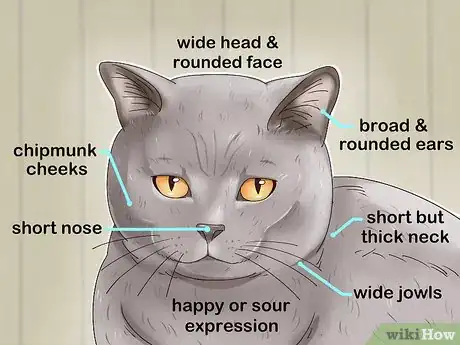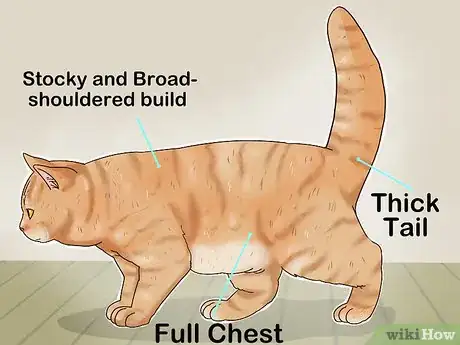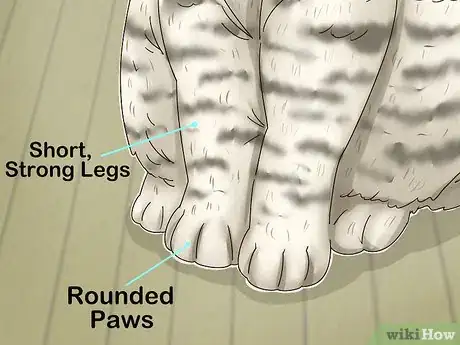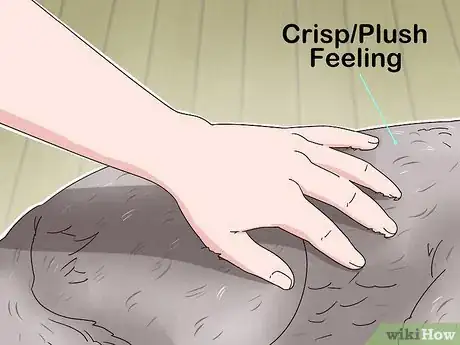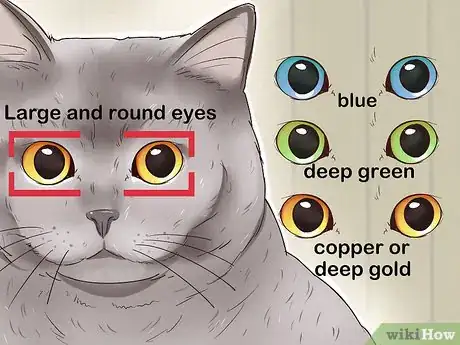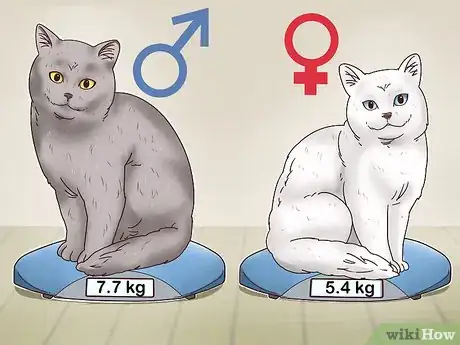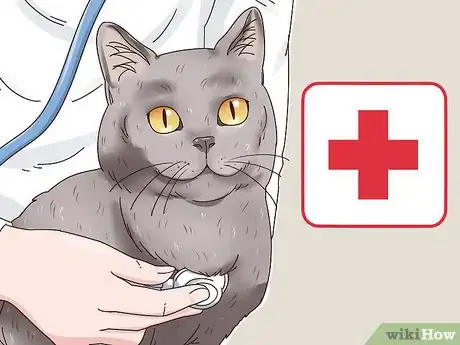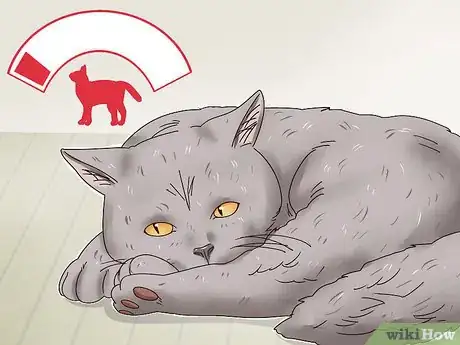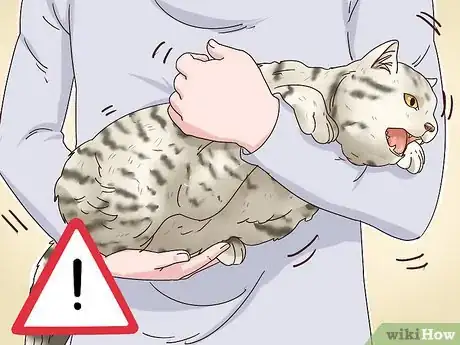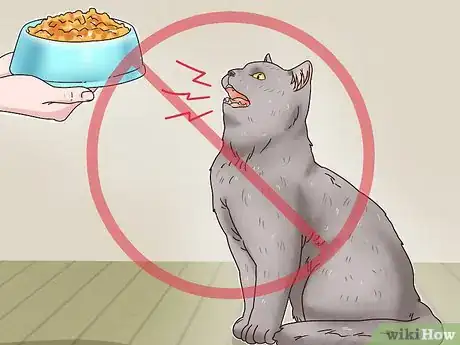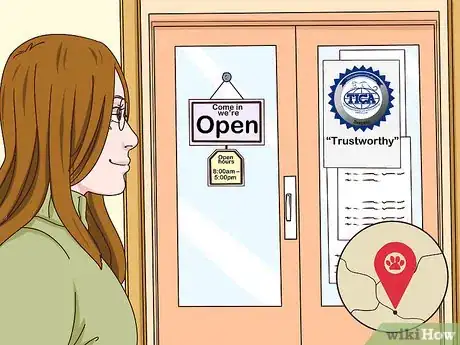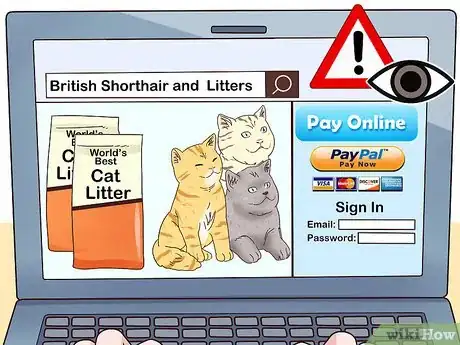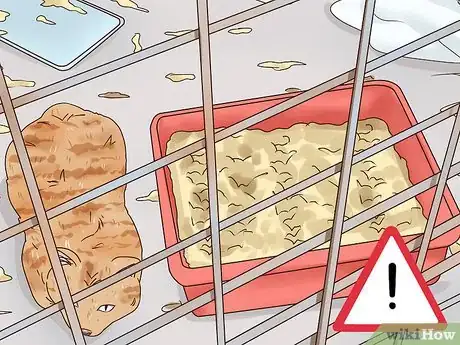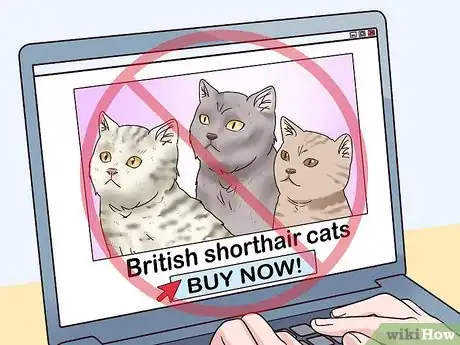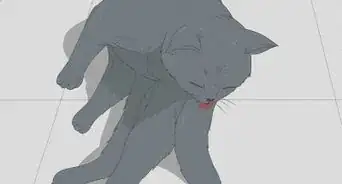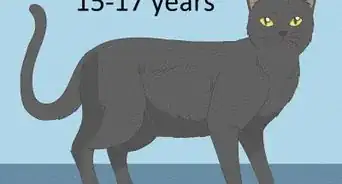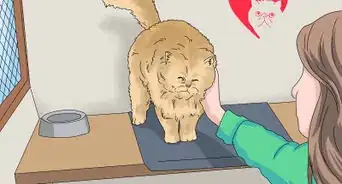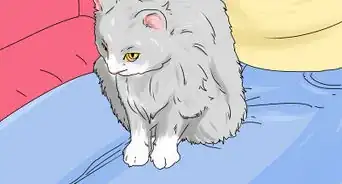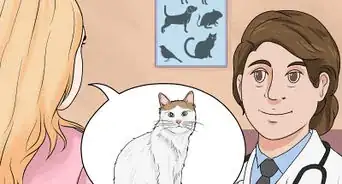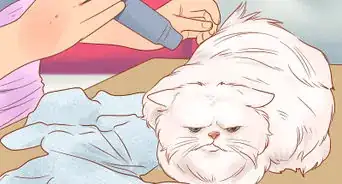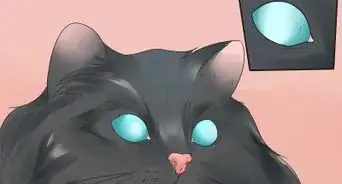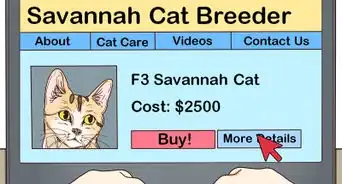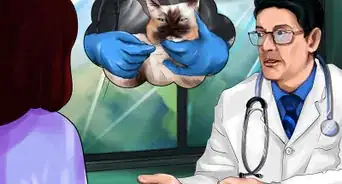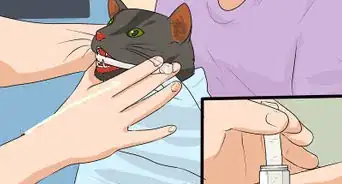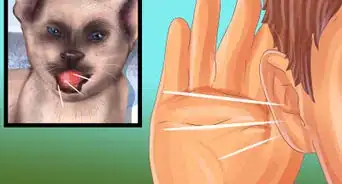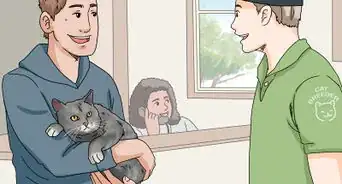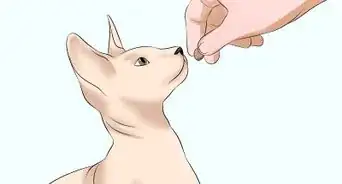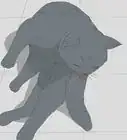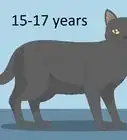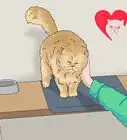This article was co-authored by Deanne Pawlisch, CVT, MA. Deanne Pawlisch is a Certified Veterinary Technician, who does corporate training for veterinary practices and has taught at the NAVTA-approved Veterinary Assistant Program at the Harper College in Illinois and in 2011 was elected to the board of the Veterinary Emergency and Critical Care Foundation. Deanne has been a Board Member of the Veterinary Emergency and Critical Care Foundation in San Antonio, Texas since 2011. She holds a BS in Anthropology from Loyola University and an MA in Anthropology from Northern Illinois University.
There are 18 references cited in this article, which can be found at the bottom of the page.
This article has been viewed 102,381 times.
There are two basic ways to identify British shorthair cats. One way is to look at the cat’s physical characteristics. British shorthairs have broad chests, wide jowls, short, powerful legs, and thick necks. You can even get the cat DNA-tested. The other way to identify them is to observe their behavior. British shorthair cats tend to keep to themselves, dislike being carried, and are not terribly active.
Steps
Looking at Physical Characteristics
-
1Look at the cat’s face and head. The British shorthair cat has a chubby face with chipmunk cheeks.[1] Look also for a rounded contour to the face, with wide jowls and a generally wide head.[2] The head should sit atop a neck that is short but thick.[3]
- The cat’s ears are broad and round.
- The nose of the British shorthair cat is short. A cluster of whiskers protrudes from just below and to either side of the nose.
- The British shorthair cat’s default facial expression is in dispute. Some describe the cat as having a happy smile, while others contend that it has a sour expression.
-
2Check the cat’s body. The British shorthair cat has a stocky and broad-shouldered build and a full chest.[4] It has a thick tail that tapers to a round tip.[5]Advertisement
-
3
-
4Examine the coat. The British shorthair cat, as its name implies, has a short coat. The coat is quite dense, however, and its short length does not prevent it from shedding heavily.[8] It has a crisp or plush feel to it.
- The cat’s coat is often a grayish blue, but it could be spotted, white, black, calico, cream, or amber, too.
-
5
-
6Weigh the cat. Male British shorthair cats weigh about nine to seventeen pounds (4.1 to 7.7 kg) when full-grown. Females weigh between seven and twelve pounds (3.2 to 5.4 kg). Weigh your cat when it is fully grown to determine whether it could be a British shorthair cat.[11]
-
7Monitor the cat’s health. British shorthair cats tend to be quite healthy. There is, however, a small chance of the cat developing polycystic kidney disease, which can cause cysts in the kidney. Hypertrophic cardiomyopathy might also be inherited in British shorthairs.[12]
- If you’re worried about your cat’s health, talk to your vet about getting a genetic test to check for the likelihood of inherited health problems. DNA testing can also help determine the breed.[13]
- British shorthairs are susceptible to developing cataracts. If you get a British shorthair, make sure to take it to a board-certified veterinary ophthalmologist.
-
8Do a DNA test on the cat. DNA tests are usually used to check for hereditary diseases in cats, but it also can help you tell whether the cat is a British shorthair or not. Talk to your vet for more information regarding DNA tests for cats.[14]
- If you are buying the cat from a reputable breeder, they should have done genetic testing already. Ask them if you can see the test results.
Examining the Cat’s Behavior
-
1Observe the cat’s demeanor. The British shorthair cat is known for being serious, thoughtful, and solitary. It tends to have a low energy level and is quite mellow.[15] This breed can be quite affectionate and is generally agreeable, with few owners reporting problems between the cat and other pets or people in the house.[16]
-
2Test the cat’s interest level in being carried. British shorthair cats do not like being carried. If you pick the cat up and find that it squirms, mewls, or makes other indications that it is uncomfortable being carried, you might have a British shorthair cat on your hands.[17]
- British shorthair cats are also unlikely to enjoy sitting on your lap.[18]
-
3Don’t try using the frequency of the cat’s meowing to identify it. There is some disagreement about whether or not British shorthair cats are very vocal. Some suggest that they are relatively quiet cats and rarely meow.[19] Other people believe that the cats are among some of the most vocal.[20] For this reason, avoid drawing any conclusion about your cat’s identity based on its vocalization habits.
Obtaining a British Shorthair Cat
-
1Locate a reputable breeder. Buy your British shorthair cat from a breeder recognized as trustworthy by the International Cat Association, the Cat Fanciers Association, or a similar organization. This way, you will be sure to get a cat that has been raised properly and had its health certified.[21]
- You could also ask your local veterinarian which breeders are reputable.
- British shorthairs are relatively rare, and you’re unlikely to find one in a shelter. You might occasionally see one available in local classified ads or at pet shops, but the best way to get a healthy cat is to obtain one through an ethical and reputable breeder.
-
2Look for red flags. When buying a British shorthair cat, be on the lookout for breeders who have kittens available all the time or have multiple litters available. The ability to pay online with a credit card should also be considered a warning sign.[22]
-
3Check the conditions. When shopping for a British shorthair cat, keep an eye on the environment the cat is kept in. If the cats are isolated in cramped cages or pens, or if their living conditions are unsanitary and dirty, you should not buy a British shorthair from that breeder. Cats raised in such conditions are harder to socialize later, and could suggest health problems.[23]
-
4Don’t rush the purchase. Sometimes you will have to wait many months before you can get the cat you want from a breeder. Reputable breeders will not sell kittens until they’ve been weaned from their mothers after they’re 12 to 16 weeks old. Spend time researching exactly what you want in your British shorthair cat and locate a trustworthy breeder who will work with you.[24]
References
- ↑ http://tica.org/cat-breeds/item/190-british-shorthair-introduction
- ↑ http://www.cat-breeds-encyclopedia.com/British-Shorthair-cat.html
- ↑ http://www.petmd.com/cat/breeds/c_ct_british_shorthair
- ↑ http://www.petmd.com/cat/breeds/c_ct_british_shorthair
- ↑ http://www.vetstreet.com/cats/british-shorthair#1_ugw20zmq
- ↑ http://www.vetstreet.com/cats/british-shorthair#1_ugw20zmq
- ↑ http://www.catsofaustralia.com/british-shorthaircat.htm
- ↑ http://www.cat-breeds-encyclopedia.com/British-Shorthair-cat.html
- ↑ http://cfa.org/Breeds/BreedsAB/BritishShorthair.aspx
- ↑ http://tica.org/cat-breeds/item/190-british-shorthair-introduction
- ↑ http://cfa.org/Breeds/BreedsAB/BritishShorthair.aspx
- ↑ https://icatcare.org/advice/cat-breeds/british-shorthair
- ↑ https://www.vgl.ucdavis.edu/services/cat/ancestry/faq.php#3
- ↑ https://www.vgl.ucdavis.edu/services/cat/ancestry/faq.php
- ↑ http://www.cat-breeds-encyclopedia.com/British-Shorthair-cat.html
- ↑ http://cfa.org/Breeds/BreedsAB/BritishShorthair.aspx
- ↑ http://cattime.com/cat-breeds/british-shorthair-cats#/slide/1
- ↑ http://www.vetstreet.com/cats/british-shorthair#overview
- ↑ http://www.catsofaustralia.com/british-shorthaircat.htm
- ↑ http://cattime.com/cat-breeds/british-shorthair-cats#/slide/1
- ↑ http://www.vetstreet.com/cats/british-shorthair#finding
- ↑ http://www.vetstreet.com/cats/british-shorthair#finding
- ↑ http://www.vetstreet.com/cats/british-shorthair#finding
- ↑ http://www.vetstreet.com/cats/british-shorthair#finding
About This Article
To identify a British shorthair cat, look at the cat's face and head to see if it has broad and round ears, wide jowls, a short nose, and chubby cheeks, which are all defining traits of British shorthairs. You should also look for a thick tail, broad shoulders, and a full chest since British shorthairs usually have a stocky build. Also, note how long the cat's coat is and what color it is. If it's short and grayish blue, white, black, calico, or amber, you could be looking at a British shorthair. To learn how to identify a British shorthair cat based on its behavior, scroll down!
